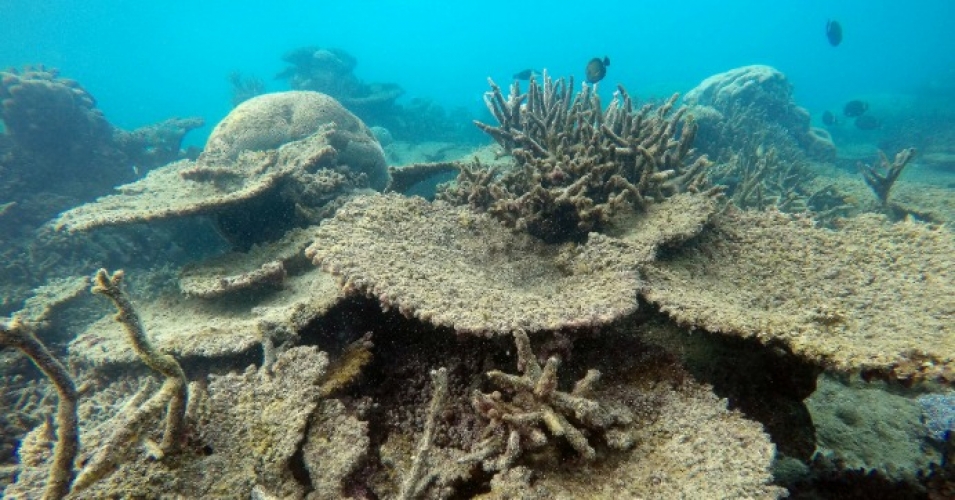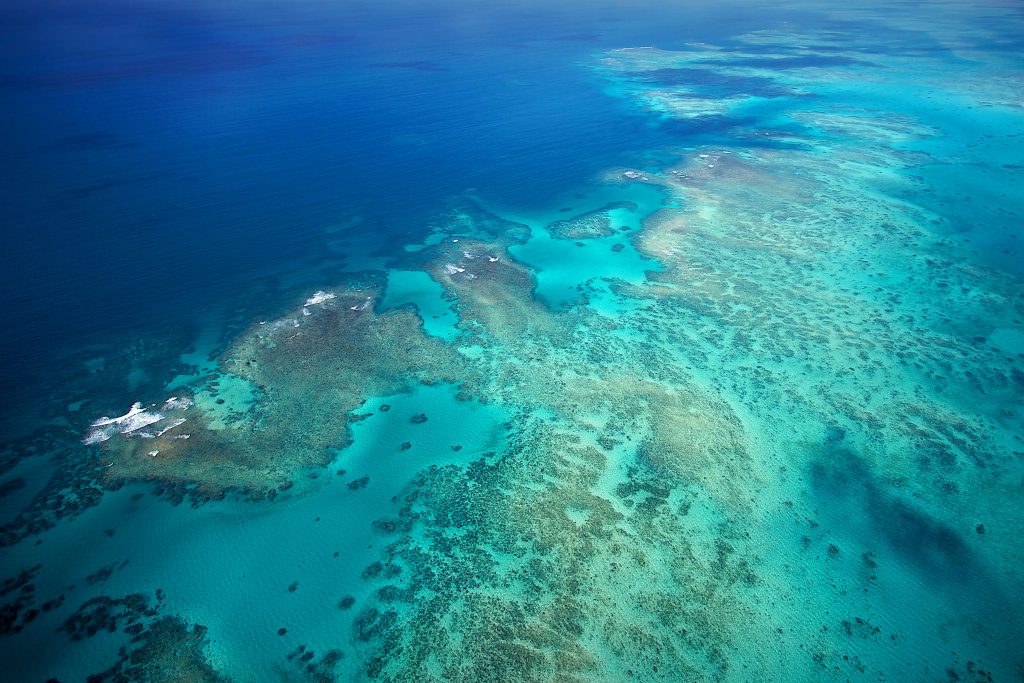
To float over such an aqueous body is to find a majestic creature unparalleled in beauty and expanse, stretching at 2,300km. There are other stunning formations on the planet, but the Great Barrier Reef has such dimension, form and cocksure brilliance as to make others shrink, not so much because of beauty as due to sheer scale and ecological variety.
But the Reef’s health record has been patchy. Each year brings a series of negative assessments about the patient. Its ticker is having palpitations; its central mineral supports in the form of coral life is being bleached. Water quality is being affected. The crown-of-thorns starfish, richly stimulated by nutrients from runoffs, has grown in number to savage the unmoving coral with relish.
With such activity, it was little wonder that the World Heritage Committee, under the umbrella of UNESCO, has suggested placing the Reef on the endangered list. While taking note of “many positive achievements by the State Party [Australia], progress has been insufficient in meeting key targets of the Reef 2050 Plan. The Plan requires stronger and clearer commitments, in particular towards urgently countering the effects of climate change, but also towards accelerating water quality improvement and land management measures.”
Despite the money committed by the Commonwealth government to protect the Reef, along with cross-institutional collaboration, “the long-term outlook of the ecosystem of the property has deteriorated from poor to very poor, and that the deterioration has been more rapid and widespread than was evident during the period 2009-2014.” Bleaching events from 2016, 2017 and 2020 “as a result of global warming”, are also noted in the agenda.
Given such considerations, the World Heritage Centre and the International Union for Conservation of Nature recommended “that the property is facing ascertained danger” and should be placed upon “the List of World Heritage in Danger.” Australia would be invited to collaborate with the World Heritage/IUCN Reactive Monitoring mission “to develop a set of corrective measures” to enable the Reef to be removed from the list of world heritage in danger.
Richard Leck, Head of Oceans for the World Wide Fund for Nature-Australia summed it up thus: “The recommendation from UNESCO is clear and unequivocal that the Australian government is not doing enough to protect our greatest natural asset, especially on climate change”. Imogen Zethoven, consultant for the Australian Marine Conservation Society, saw the UNESCO recommendation as a chance to draw attention to Australia’s lethargic climate change policies. “Australia’s climate record is more consistent with a 2.5 to 3 Celsius rise in global average temperature – a level that would destroy the Great Barrier Reef and all the world’s coral reefs.”
Members of Scott Morrison’s government violently disagreed. Ministers claim, in outrage, that such moves to deem the sacred reef endangered is a profanity and in the spirit of diplomatic duplicity. This is all the more tickling for the fact that Australia has one of the weaker environmental portfolios: Environment Ministers usually find themselves as fossil fuel cross dressers and apologists for mining. “Australia believes,” claimed the startled Environment Minister Sussan Ley, “it is wrong to single out the best managed reef in the world for this potential ‘in danger’ listing.” Ley also claimed to have been “blindsided by a sudden late decision.” It was “unheard of for a site to be added to an endangered list, or recommended … without the necessary consultation leading up to it.”
In a press release, Ley claimed that “UN officials” had assured Australia that no such recommendation would be made prior to the UNESCO World Heritage Committee meeting to be hosted by China in July. The draft decision had been a mere “desk top review with insufficient first-hand appreciation of the outstanding science-based strategies being funded by the Commonwealth and Queensland Governments.”
For a government that has politicised everything from renewable energy to the granting of mining permits, such anger was mildly amusing. In Ley’s barely credible words, “When procedures are not followed, when the process is turned on its head five minutes before the draft decision is due to be published, when the assurances my officials received and indeed I did have been upended. What else can you conclude but that it is politics?”
The allusion lurking in such views was that the decision had been massaged. In what is fast becoming a boring tic, Australian government sources pointed the eager finger at China. One, who remained unnamed, told the South China Morning Post that Australia would “appeal but China is in control.”
Rupert Murdoch’s press outlets, showing how quickly they can change from ingratiating themselves with Chinese Communist officials to condemning them (the mogul’s failed dream to penetrate the Chinese market continues to rankle), is running the Yellow Devil story. China, raged Sky News host Chris Kenny, was being aggressive towards Australia “under the guise of climate activism.” The UN was being used as a vehicle for “environmental emotional blackmail”. Sky News Political Editor Andrew Clennell was most pleased to reveal that the environment minister had “specifically mentioned China in the Coalition party room with the hint being this was another example of the coercion tactics that China has been using against Australia.”
The view from the other side was rather different. Dr Fanny Douvere of the World Heritage Centre attempted to correct the record. “We don’t share [decisions] before they are finalised,” she told Guardian Australia. “That’s the simple truth.” Nor was it credible to assume that China had been a factor. “There is absolutely zero influence. This is simply not the truth. There is no interference at all.” Beijing was not even aware of the recommendations being made.
Some of Ley’s angst may well be due to the return of the deputy prime minister, who hails from the junior partner, the National Party. Barnaby Joyce remains wedded to the idea of nuclear energy and snorts at investing in renewables. “What this insane lemming-like desire to go to renewables going to do to our economy?” he asked in 2013. Having languished in backbench exile for alleged sexual harassment, exiting a long marriage and scooting off with his mistress, he has stormed back to the front of the Morrison cabinet, decapitating (politically speaking) the now former leader, Michael McCormack. In doing so, he resumes a position he left in disgrace three years ago. More to the point, the fossil fuel fanatics are now breathing more furiously than ever, being the types who think that the Great Barrier Reef is the sort of thing you see in specimen drawers and Madame Tussauds.
South Australia’s Greens Senator Sarah Hanson-Young saw the problem closer to home and rather damning. “You weren’t ‘blindsided’,” she scornfully tweeted about Ley, “you had your eyes closed [and] ignored the science and kept taking donations from the fossil fuel industry.” The Queensland Premier, Annastacia Palaszczuk, had her own barb with the federal government, telling a press gathering on June 23 that the greatest threat to the Great Barrier Reef was none other than the National Party.
The one true victim in this international brawl is the Reef itself. Bureaucrats will be haggling and disagreeing over data, labels and outcomes as the degradation continues. And Australia, for its incessant resort to that fiction called the “rules-based international order” will seedily attack international institutions if it serves to placate domestic interests.
Dr. Binoy Kampmark was a Commonwealth Scholar at Selwyn College, Cambridge. He lectures at RMIT University, Melbourne. Email: [email protected]
GET COUNTERCURRENTS DAILY NEWSLETTER STRAIGHT TO YOUR INBOX













































